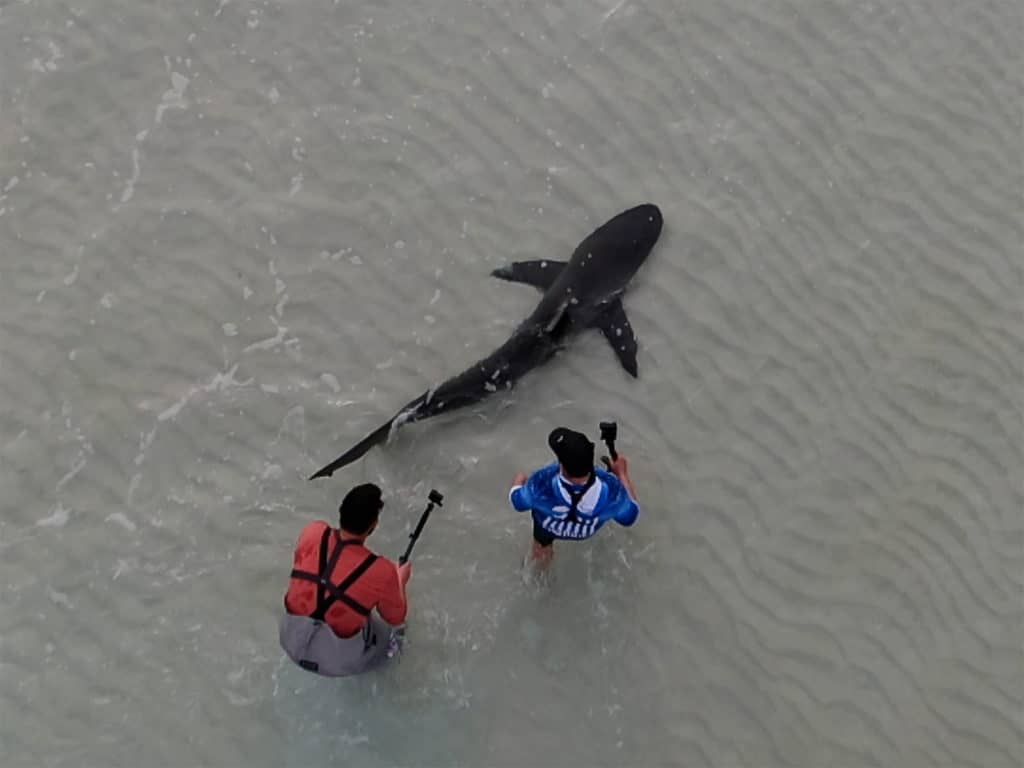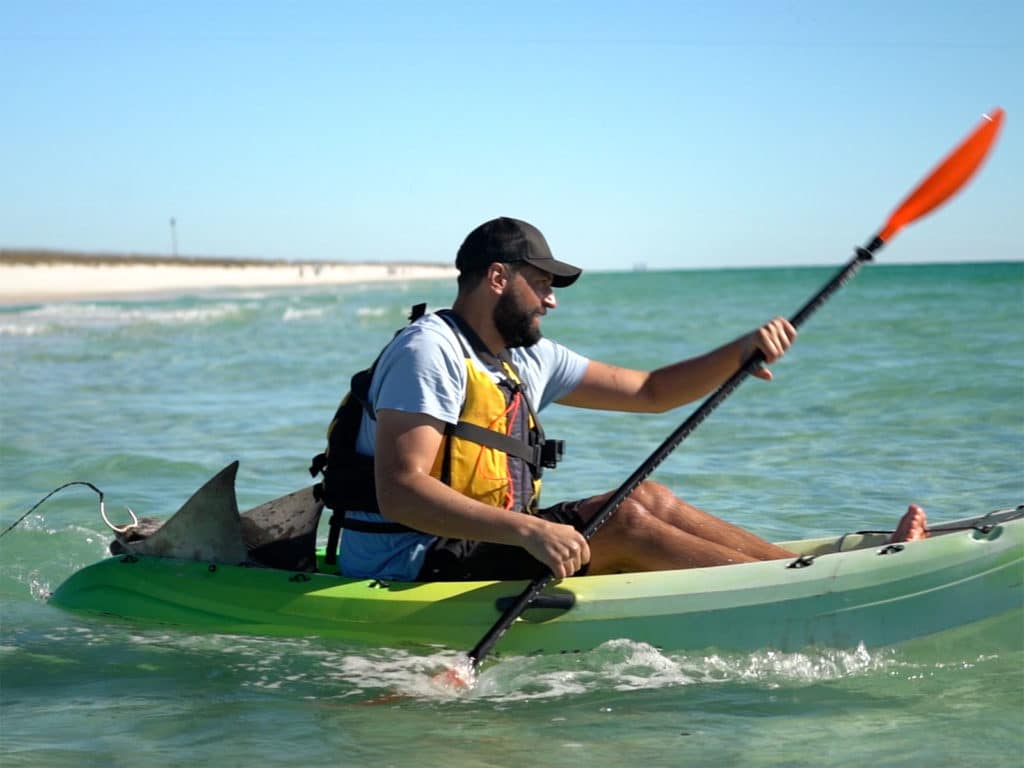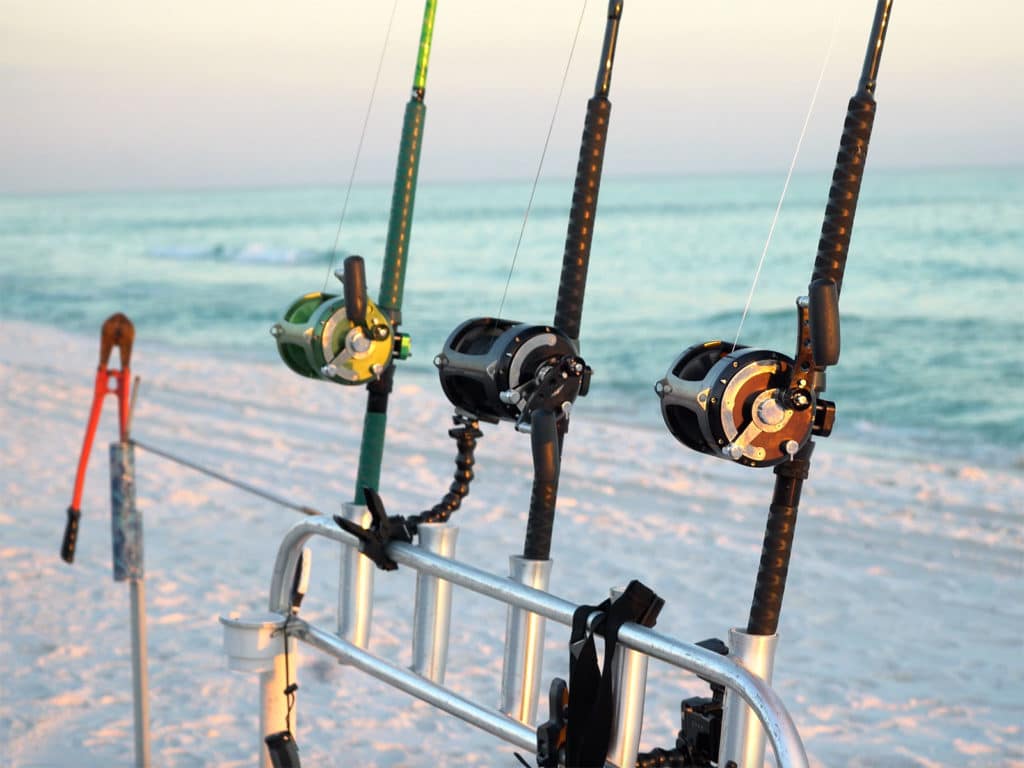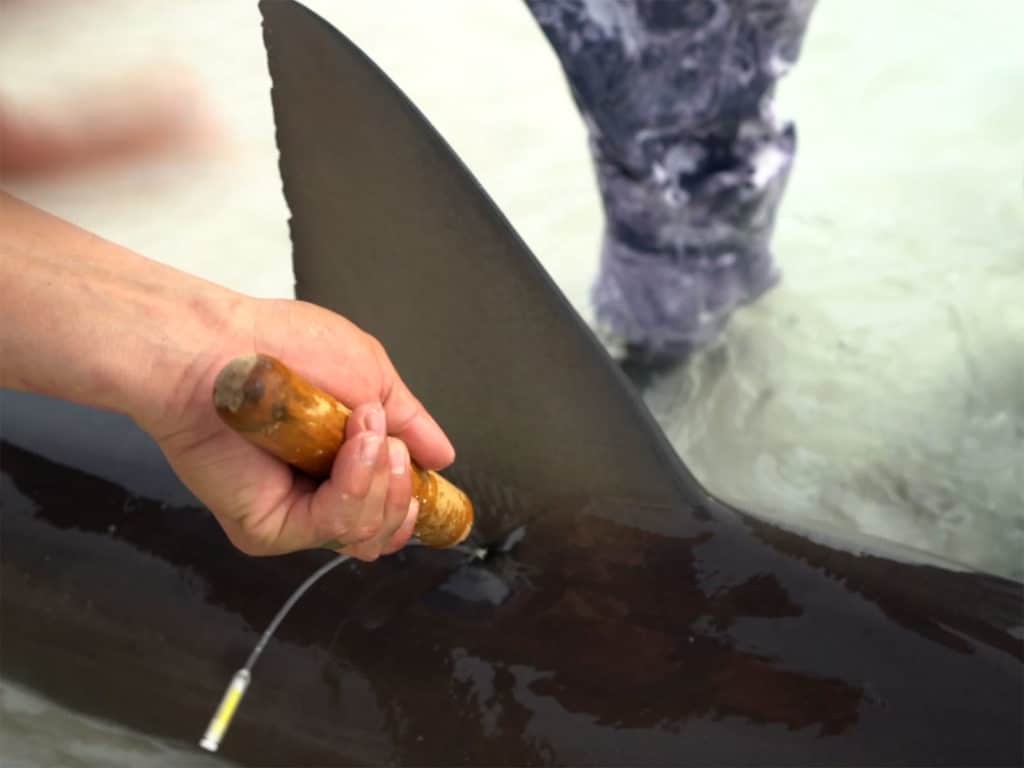
“It all comes from the movie Jaws,” says Big John McLean, a land-based shark fishing guide who specializes in connecting novice anglers with the notorious predators. “Whether people are local or they come here to vacation, they’re fascinated by sharks.”
But the public perception has changed since the 1975 Steven Spielberg film about a rogue great white shark eating teenagers and tourists. Unlike the hell-bent Capt. Quinn, today’s shark anglers aren’t trying to kill sharks, they’re working with scientists to study them and to help save them.
Social media has spawned a resurgence in shark fishing, often with an emphasis on the final hero shot. Capt. McLean capitalizes on the hot trend while also promoting shark conservation. “I am 100-percent catch and release,” McLean says. By using the right tackle and best practices, McLean makes sure the sharks he pulls to the beach swim away healthy. “If there is any chance the fish could be injured, I release it immediately, even if that means skipping the photos,” he says.
Surf Anglers Aren’t Killing Sharks
Anglers like McLean are the frontline of shark conservation. According to the NOAA Cooperative Shark Tagging Program, sharks live long, grow slowly, mature late and produce small litters, making them particularly susceptible to overfishing. In turn, the apex predators are a valuable participant in the food chain by eating the weak and thinning the herd.
Shark fishing and conservation starts with using the right gear. “I worked for years and spent thousands of dollars to find fishing tackle that is up to the challenge,” McLean says. “For everyone’s safety, don’t hook into a shark and then realize you’re ‘going to need a bigger boat.'”
Anglers heading to the beach to shark fish should go about it the right way. Use the proper equipment to land sharks — sometimes big ones — safely. Make sure it’s a safe situation for you and the shark. Keep fight times to a minimum and have the shark out of the water for as little time as possible. Also, be considerate if there are any beachgoers nearby. The best beach surf fishing spots are the ones you have completely to yourself.
1) Use Heavy Tackle for Shark Fishing
For any chance at safely releasing a 12-foot shark, use the right tackle. McLean says, “I bought everything that didn’t work.” Through trial and error, he put together a tackle package to quickly bring in the huge fish so it has plenty of strength to swim away.
- Rod: 6-foot, 6-inch Shark Bound custom 3X5 Seeker conventional. “This rod is stiff enough to turn a big shark’s head toward the beach.”
- Reel: AVET 80 T-RX. “The reel has the strongest drag available.”
- Line: 1,100 yards of 200-pound hollow-core braided line to 100 yards of 200-pound monofilament. “Some people say this is overkill, but I’ve never been spooled.”
- Leader: 16 feet of 1,000-pound monofilament and six feet of 1,000-pound steel leader. “The heavy mono and coated wire protect the shark’s skin.”
- Hook: 24/0 circle hook. “I trim the barb to easily remove the hook.”
2) How to Deploy the Bait for Shark Fishing

McLean uses big baits for big sharks. “To weed out little sharks, I use a 30-pound black drum or stingray,” he says. To carry the bait offshore, he uses a small kayak or a small remote-controlled electric boat. “The R/C boat is great when the waves are too big for the kayak,” he says.
- Kayak: Ocean Frenzy. “It’s the most stable and durable kayak for cutting through the swells. Be sure to practice falling out and getting back into the kayak.”
- R/C Boat: Aquacat Turbo X. “Clip the bait to the R/C boat, drive it through the breakers, drop the bait and the GPS-connected boat returns to shore.”
- VHF Radio: “When I’m in the kayak, I use a two-way radio to communicate with the angler on the beach controlling the reel.”
3) Shark Fighting Gear

Connecting an angler to an animal twice his size could quickly turn the tables. To even the playing field, McLean uses a sturdy fighting system. Two items are vital:
- Barrett Rod Company Fighting Plate with AFTCO Maxforce Harness “The angler sits back to counterbalance the fish.”
- Custom five-rod rod rack “To shorten the battle, I fight the biggest sharks from the beach rack.”
4) Shark Dehooking Gear
Pulling the shark into shallow water, removing the hook and taking a photo is the most magical and dangerous moment. McLean stresses safety for the shark and angler. “It is important to have the right tools at the ready,” he says.
- Wire Cutters “I use the biggest bolt cutters I could find at the hardware store. The long handle keeps my hands away from the shark’s teeth and the sharp, powerful cutters make quick work of cutting through the leader or, better yet, the hook.”
- Custom Dehooker “If the hook is deep in the mouth, I use a heavy de-hooker to pop it free.”
5) Gear to Use During the Shark Release

With the shark safely unhooked and free of the leader, McLean makes sure to have a couple pieces of gear handy to get the fish headed out, away from shore. Often, his released sharks will have a tag in them that he’s placed, as a participant of NOAA’s Cooperative Shark Tagging Program.
- Lightweight Waders “I wear waders to protect against the shark’s abrasive skin. I spent 10 days in the hospital with a staph infection.”
- Lights “When I move in to land a fish, I carry a 5,000-lumen spotlight so I can identify the shark up to 100 yards away. For close work, I have a 350-lumen Black Diamond headlamp. After I cut the shark free, I turn off the lights to avoid confusing the fish.”
- Tail Rope “If the species is not protected, I use a tail rope to control it.”
- Tagging Kit Shark tagging kits are available through NOAA’s Cooperative Shark Tagging Program or call 1-877-826-2612.









